

Skills - Writing to argue, persuade, advise. Mrs. Meacham's Classroom Snapshots. The Internet Writing Workshop: Write - Critique - Learn. Peer Edit With Perfection: Effective Strategies. ReadWriteThink couldn't publish all of this great content without literacy experts to write and review for us.
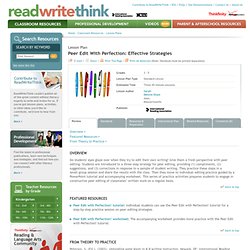
If you've got lessons plans, activities, or other ideas you'd like to contribute, we'd love to hear from you. More Find the latest in professional publications, learn new techniques and strategies, and find out how you can connect with other literacy professionals. More Teacher Resources by Grade Your students can save their work with Student Interactives. More Home › Classroom Resources › Lesson Plans Lesson Plan Overview Featured Resources From Theory to Practice Do students' eyes glaze over when they try to edit their own writing? Back to top Peer Edit with Perfection! Peterson, S. Writing and revising in the classroom often involves peer discussion, whether in a one-to-one or group setting.Editing is an arduous and unwelcome task for many students; peer editing can improve students' interest in and enthusiasm for the revision stage of the writing process.
Tompkins, G.E. (2003). Short Story Project: The Task. You will read and study – both independently and as a class – a range of short stories, focusing on the key elements of short story writing (exposition, character, setting, theme, plot, action, conflict, climax, resolution, and narrative techniques), and produce your own original short story for publication.
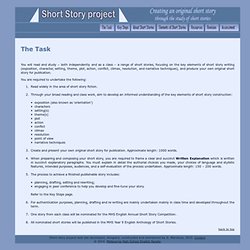
You are required to undertake the following: Read widely in the area of short story fiction. Through your broad reading and class work, aim to develop an informed understanding of the key elements of short story construction:• exposition (also known as ‘orientation') • characters • setting(s) • theme(s) • plot • action • conflict • climax • resolution • point of view • narrative techniques Create and present your own original short story for publication. Approximate length: 1000 words. When preparing and composing your short story, you are required to frame a clear and succinct Written Explanation which is written in succinct explanatory paragraphs.
Helping teachers to explore multimodal texts. The authors are co-directors of Anstey & Bull Consultants in Education (www.ansteybull.com).

Michèle Anstey is a former Associate Professor at the University of Southern Queensland, where she was Deputy Dean of the Faculty of Education. Geoff Bull is a former Associate Professor at the University of Southern Queensland where he was a Program Head and taught undergraduate and postgraduate courses in literacy and literature. He is a former national president of the Australian Literacy Educators' Association. Current definitions of literacy frequently refer to multimedia and multimodal texts. There are references to such materials throughout the Australian Curriculum: English Draft Version 1.0.1, which defines literacy in the following way:
Writer's Workshop Resources and Ideas. The majority of time of Writing Workshop is devoted to independent writing.

During this time, students are prewriting, drafting, revising, editing, and publishing their pieces. Depending on the age and abilities of your students, independent writing can be as short as 15 minutes or as long as 45-60 minutes. It helps to build stamina with your class, beginning with a short amount of time and building that time until they can work for up 30 minutes or more. According to Katie Wood Ray (The Writing Workshop, 2001), students can also do other activities during their writing time, such as writing in their schema notebooks journal writing writing exercises to experiment with language and style conducting peer-conferences reading to support writing During independent writing time, the teacher confers with students about their writing.
Teachers should keep conferences short. Writing Objectives Using Bloom's Taxonomy. Various researchers have summarized how to use Bloom’s Taxonomy.
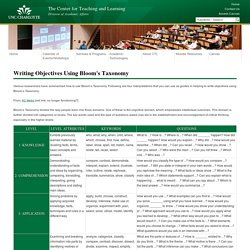
Following are four interpretations that you can use as guides in helping to write objectives using Bloom’s Taxonomy. From: KC Metro [old link, no longer functioning?] Bloom’s Taxonomy divides the way people learn into three domains. One of these is the cognitive domain, which emphasizes intellectual outcomes. This domain is further divided into categories or levels. Creative writing activities for kids, teachers and parents by Bruce Van Patter. I Keep a Writer's Notebook alongside my Students. Do you? I began requiring journal writing way back in 1990--my first year of teaching.
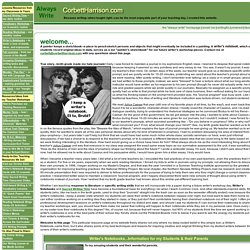
I had taken a methods class at my university that stressed the importance of having students keep journals to record daily responses to topics. I said, "Why not? " and every student from day one maintained a spiral-bound "journal" for me. Most students tossed their journals in the trash on the last day of class in June; they could have cared less about the responses they'd scribbled in there, and I knew they didn't care about their journals, yet I continued to use this daily practice for those first five or so years of teaching. To be perfectly honest, journal-writing was ten or fifteen minutes of daily "busy work" that allowed me to take care of attendance and set up the classroom's lesson for the day while the kids were quiet.
In the spring of 1998, thanks to my high school journalism students' hard work, I was awarded with a month-long, summer fellowship from I have to be doing something right. Projects: Classroom Scrapbooks. Writers Workshop. Teaching writers workshop is a beautiful and amazing thing because it allows our own creativity to flow out on to paper for our student’s to see.
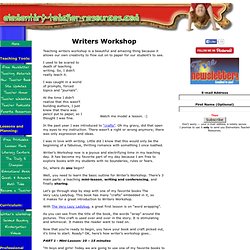
Watch me model a lesson. :) Readers and Writers Workshop.